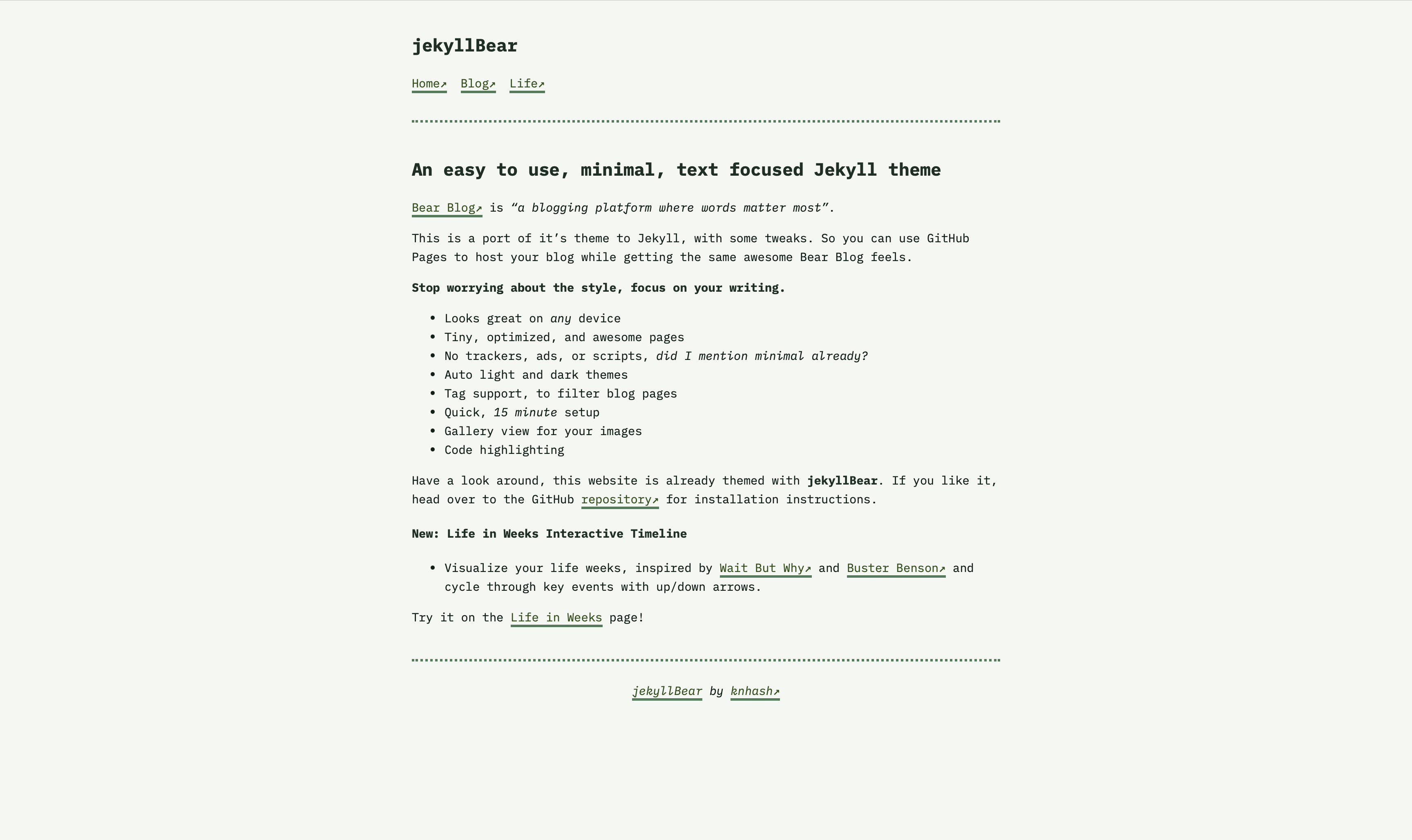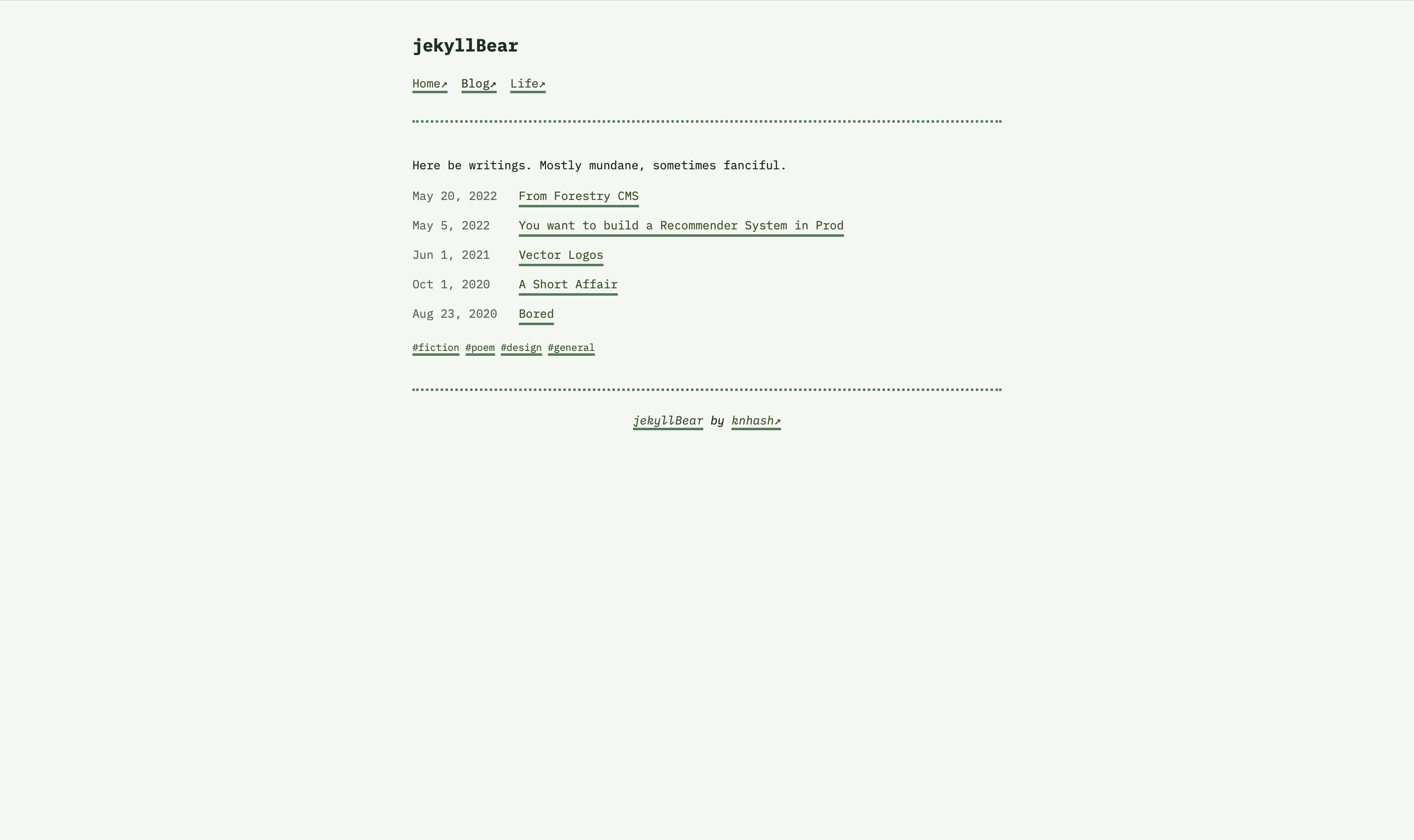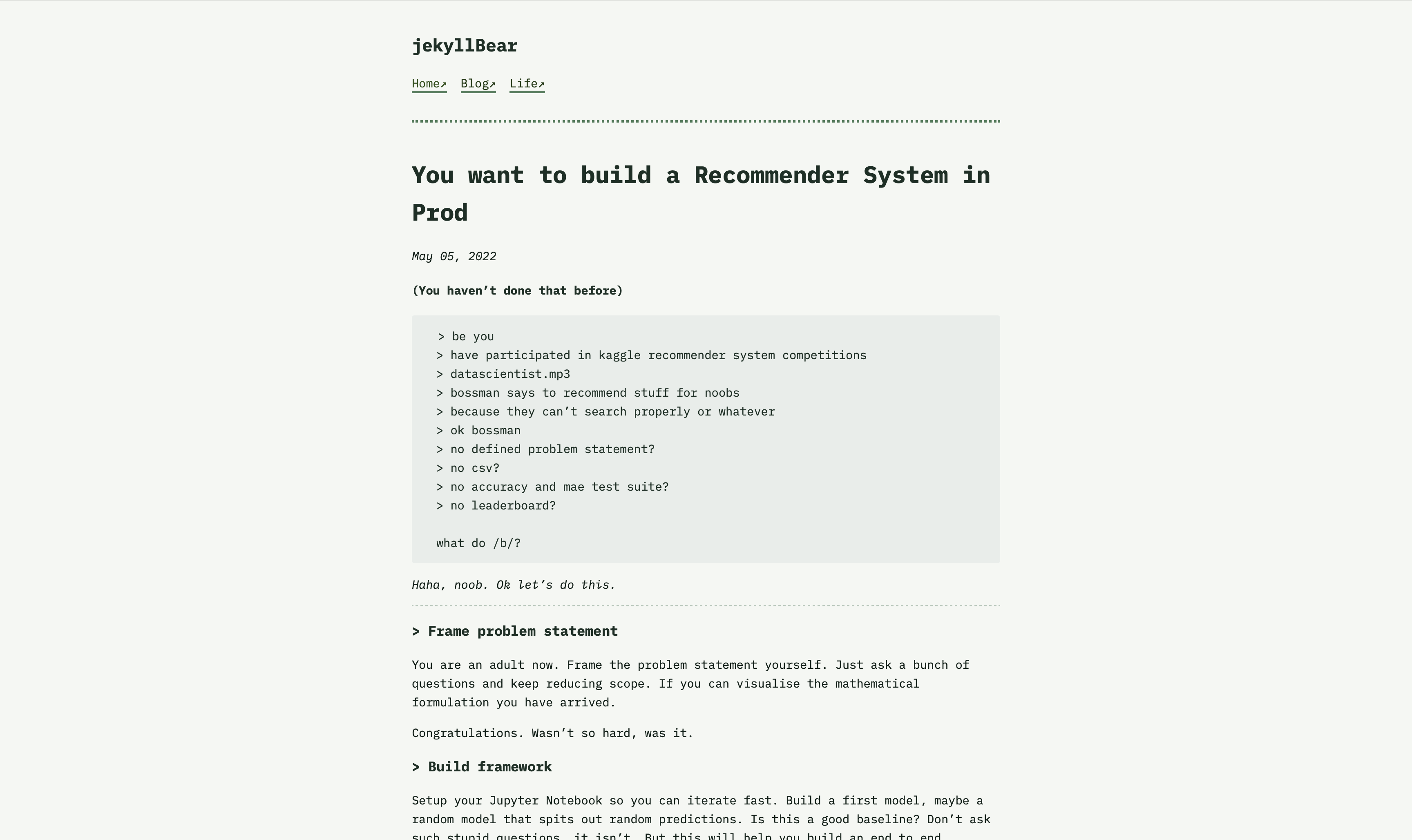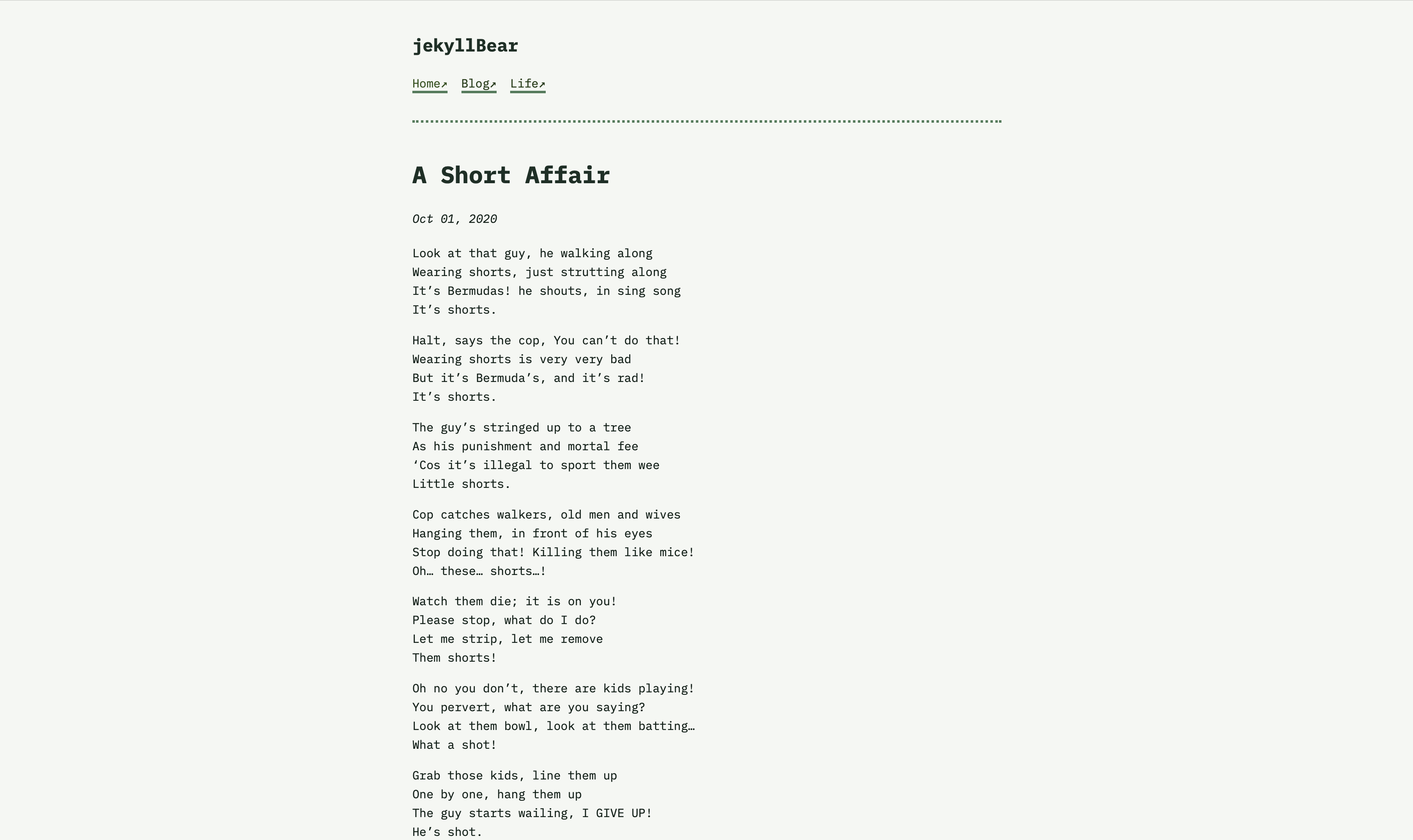Bear Blog is "a blogging platform where words matter most".
This is a port of it's theme to Jekyll, with some tweaks. So you can use GitHub Pages to host your blog while getting the same awesome Bear Blog feels.
Stop worrying about the style, focus on your writing.
- Looks great on any device
- Tiny, optimized, and awesome pages, with a 100 on PageSpeed Insights
- No trackers, ads, or scripts, did I mention minimal already?
- Auto light and dark themes
- Tag support, to filter blog pages
- Quick, 15 minute setup
- Gallery view for your images
- Code highlighting
Add this line to your Jekyll site's Gemfile:
gem "jekyll-bear-theme"And add this line to your Jekyll site's _config.yml:
theme: jekyll-bear-themeAnd then execute:
$ bundle
Or install it yourself as:
$ gem install jekyll-bear-theme
Create a new repository for your website (if necessary)
jekyll new my_website
Copy over the following content from this repository, to serve as a base setup
/posts -> Where you will write your posts
/_my_tags -> Where you will define your tags, if you need to add anything new
blog.md -> Homepage for your blog
index.md -> Website homepage
404.html -> When a page is not available
You will need to update _config.yml. Copy over the lines after
#########################
# more settings
in the _config.yml present in this repository to your website repository _config.yml.
Any new links you want to add to the navbar goes here, towards the end. This also defines the bits about tags and filtering.
There should be 3 kinds of blog posts in the posts folder, an example of each type you can use:
- long-form reading
- poetry
- gallery view
Use them as templates for your front matter.
To test your theme, run
bundle exec jekyll serveand open your browser athttp://localhost:4000.
Bug reports and pull requests are welcome on GitHub at https://github.com/knhash/jekyllBear. This project is intended to be a safe, welcoming space for collaboration, and contributors are expected to adhere to the Contributor Covenant code of conduct.
To set up your environment to develop this theme, run bundle install.
Your theme is setup just like a normal Jekyll site! To test your theme, run bundle exec jekyll serve and open your browser at http://localhost:4000. This starts a Jekyll server using your theme. Add pages, documents, data, etc. like normal to test your theme's contents. As you make modifications to your theme and to your content, your site will regenerate and you should see the changes in the browser after a refresh, just like normal.
When your theme is released, only the files in _layouts, _includes, _sass and assets tracked with Git will be bundled.
To add a custom directory to your theme-gem, please edit the regexp in jekyllBear.gemspec accordingly.
The theme is available as open source under the terms of the MIT License.



